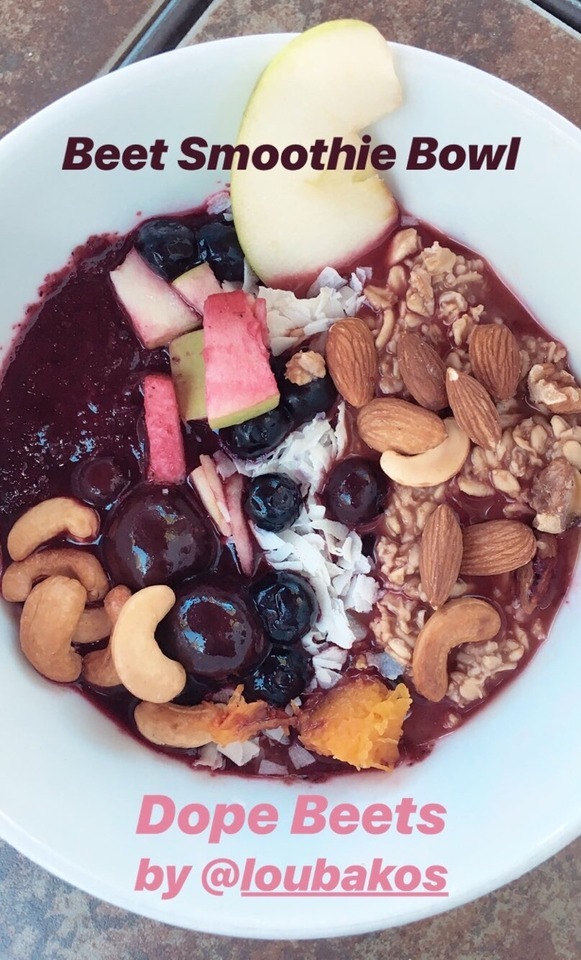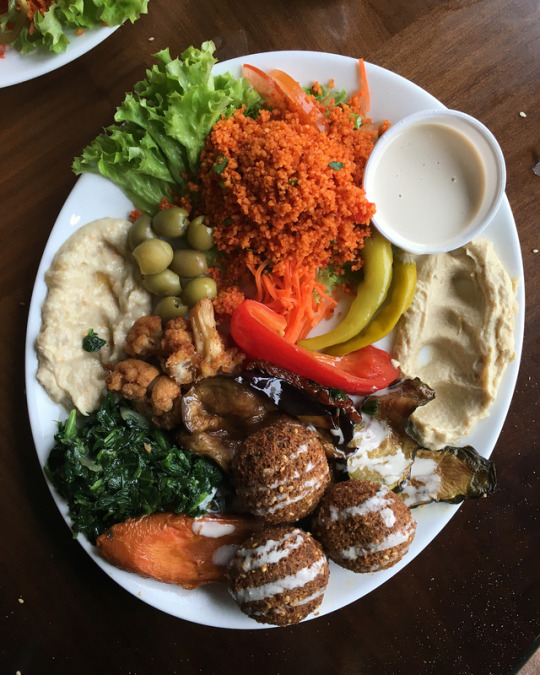Video
youtube
Daffy Duck: I dream of a genie with light brown feathers
2 notes
·
View notes
Video
youtube
Cauliflower Stuffing
This low-carb cauliflower stuffing proves that bread is NOT essential to an amazing stuffing. (Although we do stand by our classic stuffing always.) It's also made on the stovetop from start to finish, which bodes amazingly well for your oven space.
Don't skimp on the butter.
Just because we're going low carb does not mean we're going low fat. A generous amount of butter (half a stick) is essential to delicious Thanksgiving stuffing.
Build your base.
Just like any classic stuffing, this starts with sautéing your mirepoix—onion, celery, and carrots—which, when mixed with herbs, makes everything taste like Thanksgiving anyways. Once those cook down for about 8 minutes, you add your cauliflower and mushrooms, which add some nice "meatiness" to this vegetarian dish.
Add a lot of fresh herbs.
Cauliflower is basically a sponge for however you flavor it, so make sure to get a lot of herbs packed into this dish. We did a mix of fresh parsley, rosemary, and sage. You can totally go dried if you already have them on hand or dread dropping money on fresh herbs, but nothing beats the flavor of the fresh springs in our opinion :)
Simmer it.
Pouring over some vegetable or chicken broth (if you're not trying to make this a vegetarian-friendly dish) helps all of the vegetables steam together and better meld into one dish. If you want, after you add the broth you could bake the cauliflower stuffing, but we don't find it essential.
IINGREDIENTS
4 tbsp. butter
1 onion, chopped
2 large carrots, peeled and chopped
2 celery stalks, chopped or thinly sliced
1 small head cauliflower, chopped
1 c. (8-oz.) package baby bella mushrooms, chopped
Kosher salt
Freshly ground black pepper
1/4 c. freshly chopped parsley
2 tbsp. freshly chopped rosemary
1 tbsp. freshly chopped sage (or 1 tsp. ground sage)
1/2 c. low-sodium vegetable or chicken broth
DIRECTIONS
In a large skillet over medium heat, melt butter. Add onion, carrot, and celery and sauté until soft, 7 to 8 minutes.
Add cauliflower and mushrooms and season with salt and pepper. Cook until tender, 8 to 10 minutes more.
Add parsley, rosemary, and sage and stir until combined. Pour over broth and cook until totally tender and liquid is absorbed, 10 minutes.
0 notes
Video
10 tricks you didn’t know you could do with your food.
By Blossom
337K notes
·
View notes
Text
The inglorious rise of Two Buck Chuck
The tale of two men, one wine brand, and the economic revolution of an entire industry.
BY ZACHARY CROCKETT
Walk into almost any Trader Joe’s store and the first thing you’ll see is an enormous display of Charles Shaw wine — or, as it’s more affectionately known, “Two Buck Chuck.”
At $2.99 per bottle, Two Buck Chuck is one of TJ’s all-time best-selling products. Since debuting in 2003, it has won the hearts of critics and customers alike and has sold over 1B bottles.
“I’ve tried a lot of cheap wine,” a young Trader Joe’s-goer in Austin, Texas assures me. “Charles Shaw is the crème de la crème.” Clutching two bottles of 2017 vintage Chardonnay, a shopper in Palo Alto, California adds that it “goes down smooth and [is] cheaper than water.”
How is a supposedly decent wine sold at such a low price-point? And where did it come from? This is the tale of one wine brand, two men, and the economic revolution of an entire industry.
Will the real Charles Shaw please stand up?
Charles Shaw embodied the elitist aura of the wine industry.
He obtained degrees from West Point and Stanford Business School. He worked as an investment banker in France and spent his summers wearing polo shirts in Nantucket. He could sniff a glass of Gamay Nouveau and pick out the “notes of banana.”
In the early ‘70s, while banking in Paris, Shaw fell deeply in love with the craft of winemaking.
So he quit his banking gig, bought 20 acres of land in Napa, California with his wife’s inheritance, and launched Charles F. Shaw Winery.
Shaw’s wines were not crafted for the plebes. Debuted in 1978, his flagship bottle, a Beaujolais, retailed for $13.50 ($35 today), and won international acclaim. “It had an amazing garnet color and was really quite striking, he later told Thrillist. “I liked to drink it with a Tiffany's all-purpose glass.”
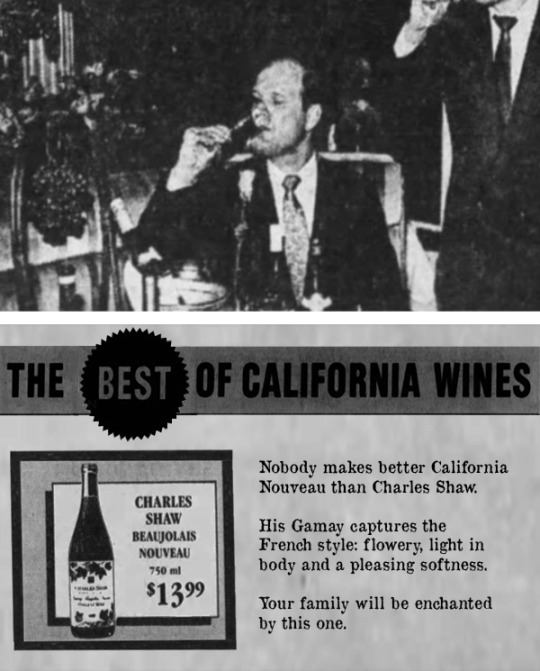
TOP: Charles Shaw (left) samples a glass of his 1986 Gamay Nouveau (The Tennessean, April 23, 1987); BOTTOM: An advertisement for one of Shaw’s “fine boutique wines” (San Francisco Examiner, 1990)
Charles Shaw Winery soon expanded to 115 acres, 60 employees, and 15k cases per year. Business was booming. Shaw and his wife, Lucy, epitomized the Haute couture of Napa Valley: Tall, elegant, and beautiful, they turned heads at fancy galas and industry events.
Then, in the late ‘80s, things began to fall apart.
Shaw lost “hundreds of thousands of dollars” after a supplier error tainted 1.4k barrels of wine. He dealt with a devastating root louse infestation that claimed 50 acres of his vines. He over-anticipated the demand for Burgundies. He went through a nasty divorce that took a toll on his management. Then, a recession hit.
By 1992, Shaw was $3m in debt and filed for Chapter 11 bankruptcy. He “stashed the last of his cash under the floor of his car,” took a final glance over his trellised hills, and left town.
The box wine baron
Fred Franzia did not share Shaw’s air d'élégance.
He was unrefined and heavyset, with a body shape the New Yorker likened to a “gourmet marshmallow” (Business 2.0 Magazine called him “a cross between John Madden and Shrek”).
Reclusive and gruff, he shied away from public appearances and scoffed at Napa Valley’s wine snobbery. He referred to winemakers as “bozos.” He didn’t care for France.
Franzia came from a long lineage of winemakers. His great-grandfather, Giuseppe, had immigrated to California’s Central Valley in 1893 and set up Franzia Brothers Winery (later sold to Coca-Cola); his uncle, Ernest Gallo, had built the largest wine exporter in California.
In 1973, Franzia launched his own wine company, Bronco Wine Co. In a rickety wood-paneled trailer held together with duct tape, he set out to produce extremely cheap, high-quality “super-value” wines — wines that rejected the pretentiousness of Napa Valley.

TOP: Fred Franzia (right) breaks ground on Bronco Wine Co. with his brothers (via Bronco); BOTTOM: Franzia inhales grapes (via Michael Kelley, Business 2.0 Magazine)
Initially, Bronco operated as a wholesaler, buying bulk wine and selling it to larger wineries at a profit. But soon Franzia saw an opportunity to produce his own cheap wines — wines, as he later put it, that “yuppies would feel comfortable drinking.”
He developed a strategy of buying out distressed wineries with distinguished-sounding names — Napa Ridge, Napa Creek, Domaine Napa — and using them to sell his stock of less-desirable Central Valley wines. Through a legal loophole, he could say the wines were “Cellared and Bottled in Napa,” so long as the brand was founded prior to 1986.
On a summer day in 1995, a few years after Charles Shaw Winery went bust, Franzia purchased the winery’s brand, label, and name for a mere $27k.
"We buy wineries from guys from Stanford who go bankrupt,” he later boasted. “Some real dumb-asses from there."
Unbeknownst to the real Charles Shaw, Franzia was about to transform his once-fancy wine brand into an impossibly cheap “everyman’s juice” — and change the wine industry forever.
How Franzia “shorted” the wine business
In the late 1990s, there was a wine boom: Vineyard acreage grew by 24% and suddenly everyone from car mechanics to plumbers was putting up vines on spare California land.
Soon, there were rumblings that the industry was over-producing grapes and could face a crash. While most dismissed the warning, Franzia hedged a bet on it.
He constructed a faux-Tuscan, 92k-square-foot bottling plant with high-speed lines that were capable of producing 18m cases per year — 2x the amount of wine in the entire Napa Valley. He also stopped producing wine altogether, and his 452 stainless steel storage tanks sat empty, waiting for the market to go belly-up.
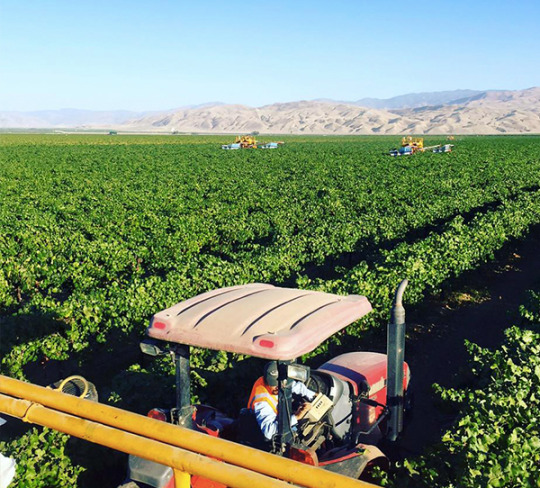
A small portion of the vineyards at Bronco’s San Joaquin Valley vineyard in Central California (Bronco)
Franzia’s intuition paid off. The industry soon faced a massive glut, and while other vintners suffered surpluses, he bought up as much cheap wine as he could get his hands on.
Wineries were forced to “purge” massive quantities of their high-quality wine, or risk oversaturating their own market. Franzia was able to suck it up for as little as 50 cents/gallon — an astonishingly low price compared with the going rate of $10/gallon just a few years earlier.
Franzia had let the Charles Shaw Winery brand sit dormant since purchasing it years before. Now, he was ready to bring it back to life.
Using the exact same name and label (which pictures Shaw’s old tennis court pagoda), he launched a large-scale production effort. His facilities ran 24 hours a day, 7 days per week — and in a short time, he’d churned out a two-story-tall stack of Charles Shaw cases ready for distribution.
The inglorious rise of Two Buck Chuck
Trader Joe’s already carried several other wine brands operated by Franzia, and they were willing to give Charles Shaw a whirl.
In the Spring of 2002, the label made its retail debut at the shockingly low price of $1.99 per bottle. Early on, in an internet chat room, a Trader Joe’s employee dubbed it “Two Buck Chuck” — a moniker that caught the eyes of budget-conscious shoppers.
These were the days following the Dot-Com bubble and the early 2000s recession: There was a demand for cheap wine. But nobody — not even Franzia — could’ve anticipated the wine’s success.
Come Fall, certain locations were selling up to 6k bottles per day. People would come to Trader Joe’s and fill up their SUVs with dozens of cases; some days, customers would line up outside the stores before they opened, and an entire supply would sell out in minutes.
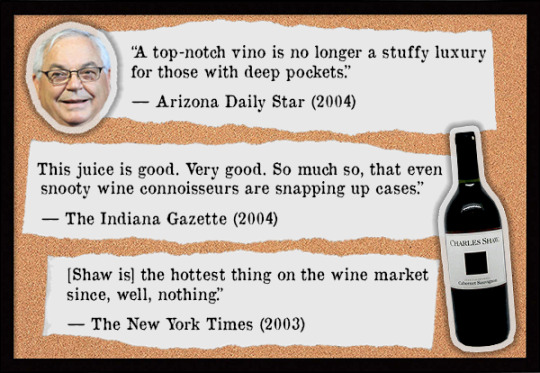
Charles Shaw wines were met with surprisingly good reviews (via assorted newspapers 2003-4)
“People went apeshit,” Keith Wallace, a wine expert, told Thrillist. “It was the ‘Macarena’ of wine… And it was this blue-collar pride thing. People thought, ‘This bottle is just as good as one that's $20. Screw those snobs.’"
By early 2003, Charles Shaw had already sold 60m bottles, accounting for 12% of all of California’s wine shipments within the state. It was, by wine experts’ estimation, the fastest-growing wine in US history. When Franzia sold his 400-millionth bottle of Charles Shaw in 2009, he had only one thing to say: “Take that and shove it, Napa.”
For a $2 bottle, it performed astonishingly well in competitions. The Chardonnay won a double-gold at the 2007 California State Fair, and Wines & Vines Magazine rated it higher than a $67 bottle in a blind tasting.
Two Buck Chuck, declared one critic, had “revolutionized wine drinking” forever.
How to make money on a $2 bottle on wine
Franzia pulled off something wine experts never thought possible: He managed to produce a rock-bottom-priced wine that people actually like to drink — and make money on it. How on Earth is that possible?
For starters, though the Charles Shaw label boasts “Cellared and Bottled in Napa,” most of the wines’ grapes come from the Central Valley, where Franzia owns 35k+ acres of vineyards. Though he capitalizes on the Napa name, his operation is rooted in an area with dramatically cheaper land and operation costs.
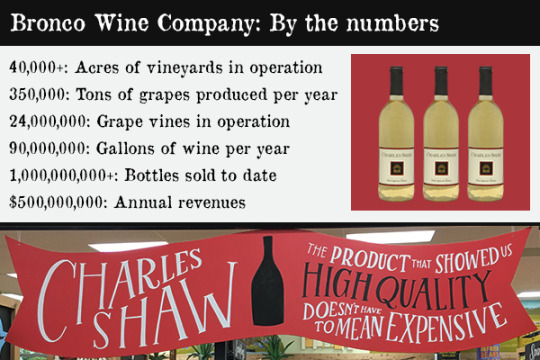
Franzia’s enormous holdings have allowed him to produce Charles Shaw wines at an extremely low price point (The Hustle)
These days, most Charles Shaw bottles contain a blend of bulk-purchased grapes and grapes grown by Franzia on his own land. Using a suite of 700k-gallon tanks (most small wineries use 700-gallon tanks), he is able to pump out 90m gallons of wine every year.
Franzia also has a hand in nearly every part of the supply chain: He maintains his own bottling plant (which produces 250 bottles per minute), a 62m-gallon storage facility, and a distribution network that includes a fleet of steel tanker trucks.
Lastly, every corner is cut: He uses oak chips to ferment his wine rather than barrels; he swaps real corks for composites; he subs traditional wares for lightweight bottles and crates.
Franzia has stated that his tactics would make the average farmer “shit in his pants.” But his robust empire, tremendous output, and ruthless bulk-buying tactics have allowed him to keep prices down and earn reported revenues of ~$500m per year.
Just business
Today, Charles Shaw lives in Chicago and works at the Chicago Board of Trade, a futures and options exchange.
At 74 years old, he has mostly moved on from wine — though he once referred to the continued use of his name as “embarrassing and demeaning.” He has never seen a penny from Two Buck Chuck.
"It's not a Napa wine, and not of the quality of the Charles Shaw brand [that was] estate grown with layers of complexity,” he told the Napa Valley Register, during the height of the Two Buck Chuck boom in 2003. "To take [my name] and come out and have a lesser wine from another appellation — that isn't what I started out to do, was it?”

Charles Shaw and Fred Franzia today (The Hustle)
Franzia, on the other hand, continues to rake in the big bucks from his Charles Shaw and his other 150 labels.
On his compound in the sparse agricultural town of Ceres, California, he works 100-hour weeks. As his friend, Michael Mondavi, once said: “He sleeps, drinks, eats the wine business... He doesn’t worry about yachting or golf. Just business.”
His role in changing the wine industry has earned him near universal hated by “true wine people” — mainly vintners who claim he’s “cheapened” the good Napa name. But this doesn’t bother him much.
“You tell me why someone’s bottle is worth eighty dollars and mine’s worth two dollars,” he retorted. “Do you get forty times the pleasure from it?”
- thehustle.co
0 notes
Photo

The Snowy Plover via @hpsyk #latergram •••••••••• The Snowy Plover, from Andytown Coffee, is the Tastiest Drink in #SanFrancisco according to thebolditalic.com. •••••••••• Named after a bird that can be found in #SF’s Outer Sunset, the drink is a combination of sparkling water and 2 shots of home-roasted #espresso topped with a healthy dollop of homemade whipped cream. #mixitin or #letitfloat. •••••••••• To call it a “coffee float” would be like calling an Aston Martin DB5 a “car” — while technically true, it doesn’t really capture the essence of something this incredible. - thebolditalic.com. #coffee #wildaircoffee (at Andytown Coffee Roasters)
0 notes
Photo

@little.damage activated charcoal ice cream and cone. #latergram (at Little Damage)
0 notes
Photo

A dirty Chaga Chip Superfood Elixir: #Chaga, almond and cashew milk, vanilla, cinnamon, cacao, monk fruit, pink sea salt and cold brew #coffee topped with coconut cream and cacao nibs. (at Alfred Tea Room)
0 notes
Photo
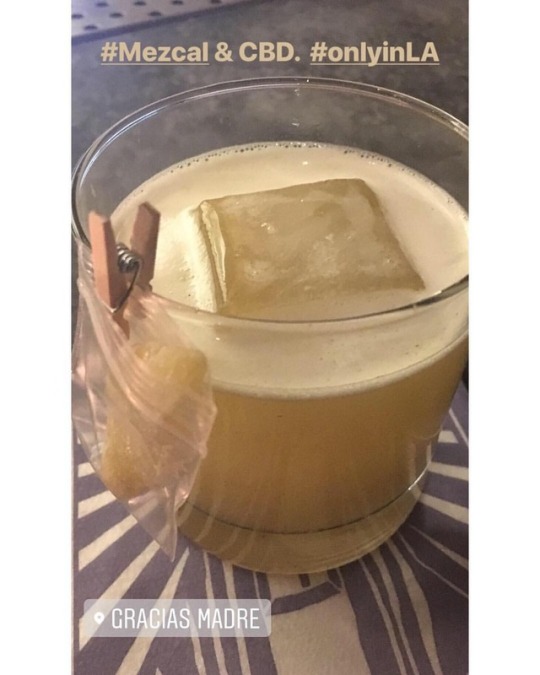
ALTERNATIVE MEDICINA: #mezcal, yuzu, ginger, honey, grand hops amaro, centennial mist, cannabinoids. #cocktails #cbd #mezcalmakeseverythingbetter #mezcal #cocktail #losangeles (at Gracias Madre)
0 notes
Photo

Umami with @jesschristi. #latergram #mezcalmakeseverythingbetter #mezcal #cocktail #losangeles (at Umami Burger)
0 notes
Photo
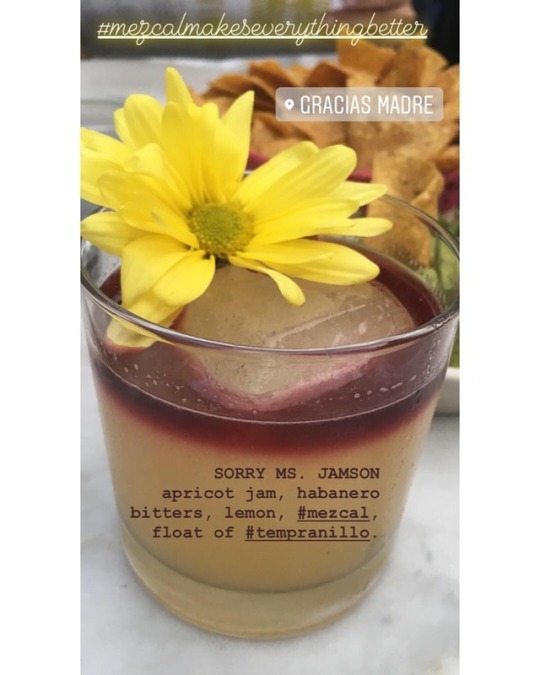
#mezcalmakeseverythingbetter #mezcal #cocktail (at Gracias Madre)
0 notes
Photo
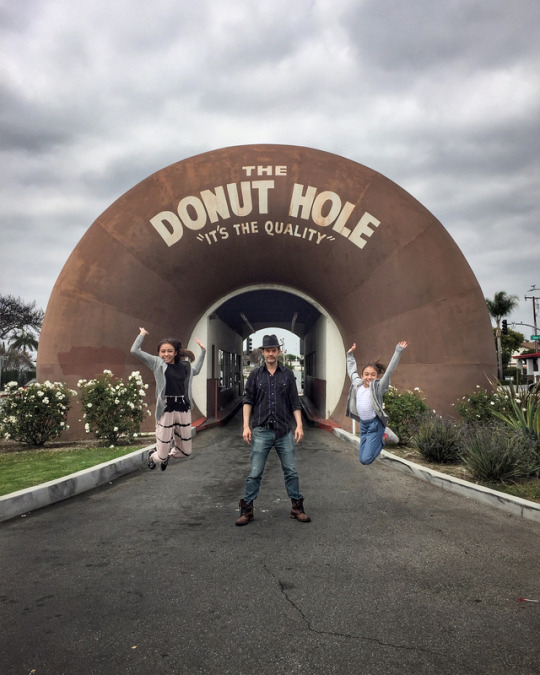
The Donut Hole 🍩🍩🍩🍩🍩 Opened in 1968, The Donut Hole was once a chain with locations throughout Southern California, but now this lone donut is the only survivor. This building gets double points in the #programmaticarchitecture tally because not only is it shaped like a donut to draw attention from passing cars, you can also drive right through the #donut to get your #doughnuts. (at The Donut Hole)
1 note
·
View note
Photo
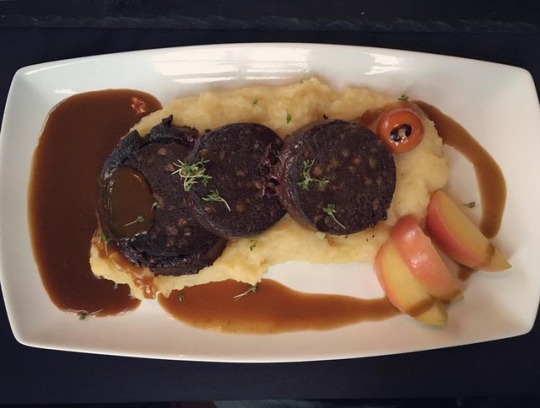
Himmel und Erde (Heaven and Earth) — Himmel und Erde (in the Rhineland: Himmel un Ääd) is a traditional German dish most popular in the regions of the #Rhineland, #Westphalia and Lower #Saxony. Named for the two main ingredients, #apples (from the sky) and #potatoes (from the ground), this dish resembles mashed potatoes but has distinct apple flavour and sweetness. It is most often served with #bloodsausage. It has been known since the 18th century. #bestofjtothezfood (at Zeche Zollern II/IV, Westfalian Museum of Industry)
0 notes
Photo

.@DarkSugars in #Shoreditch is one of our #London traditions. I met Paul about 5 years ago when I first discovered the little shop on Brick Lane. It’s grown to two locations, the #chocolates are incredible and the #hotchocolate is some of the best I’ve ever had but Paul is the reason we keep coming back. He is the heart and soul of Dark Sugars. #familyofdarksugars (at Dark Sugars)
0 notes
